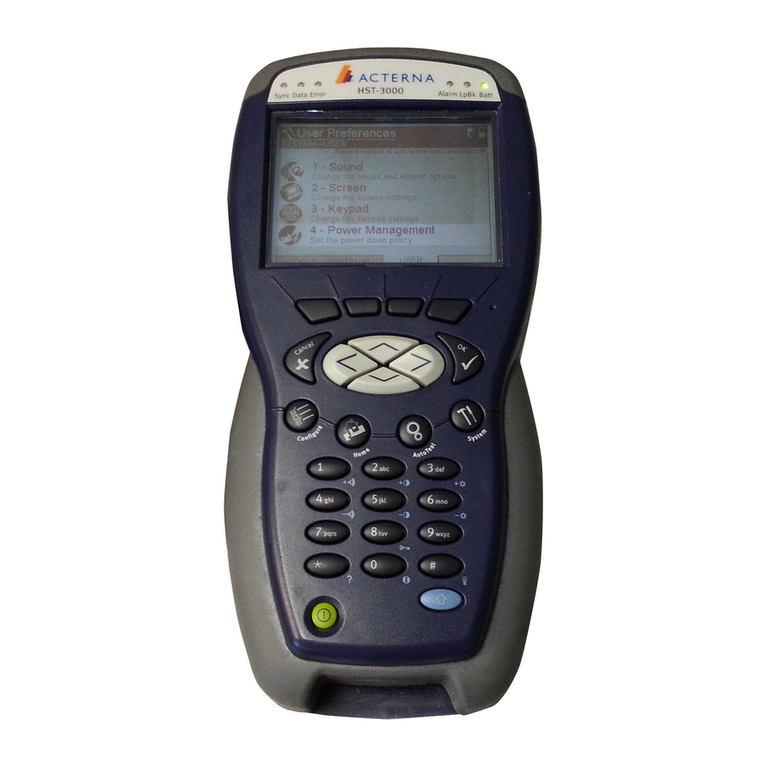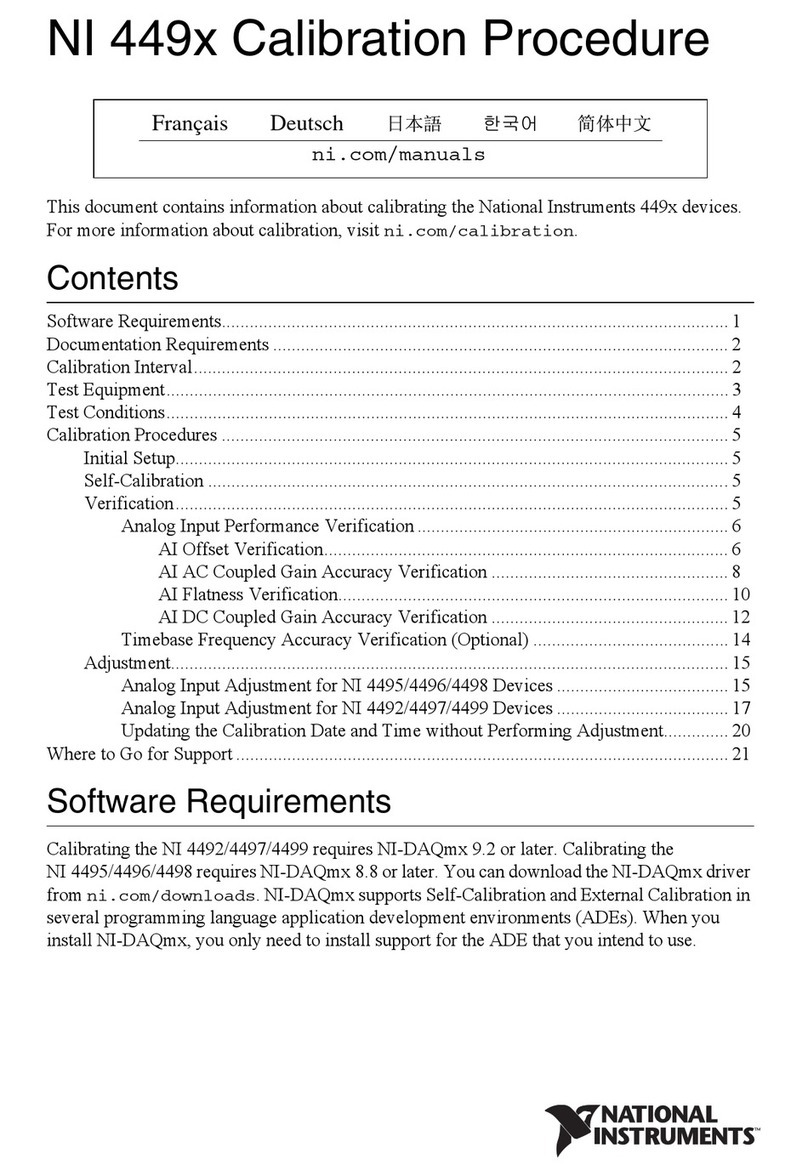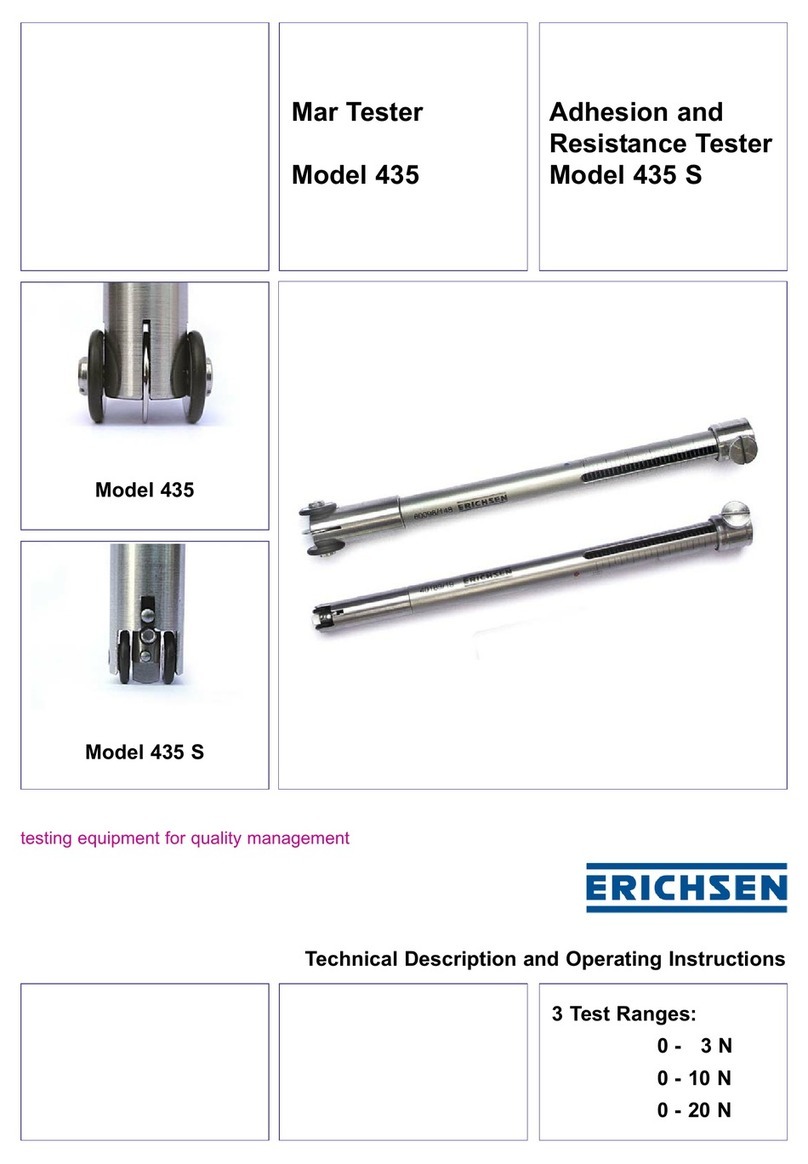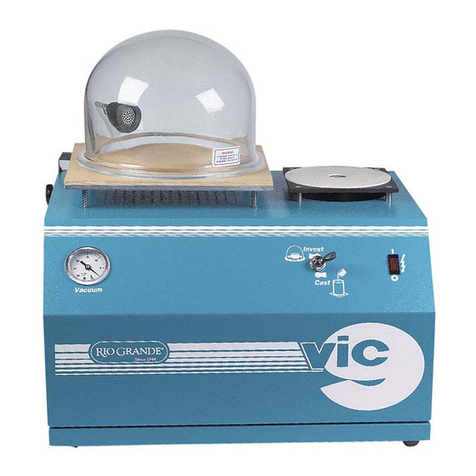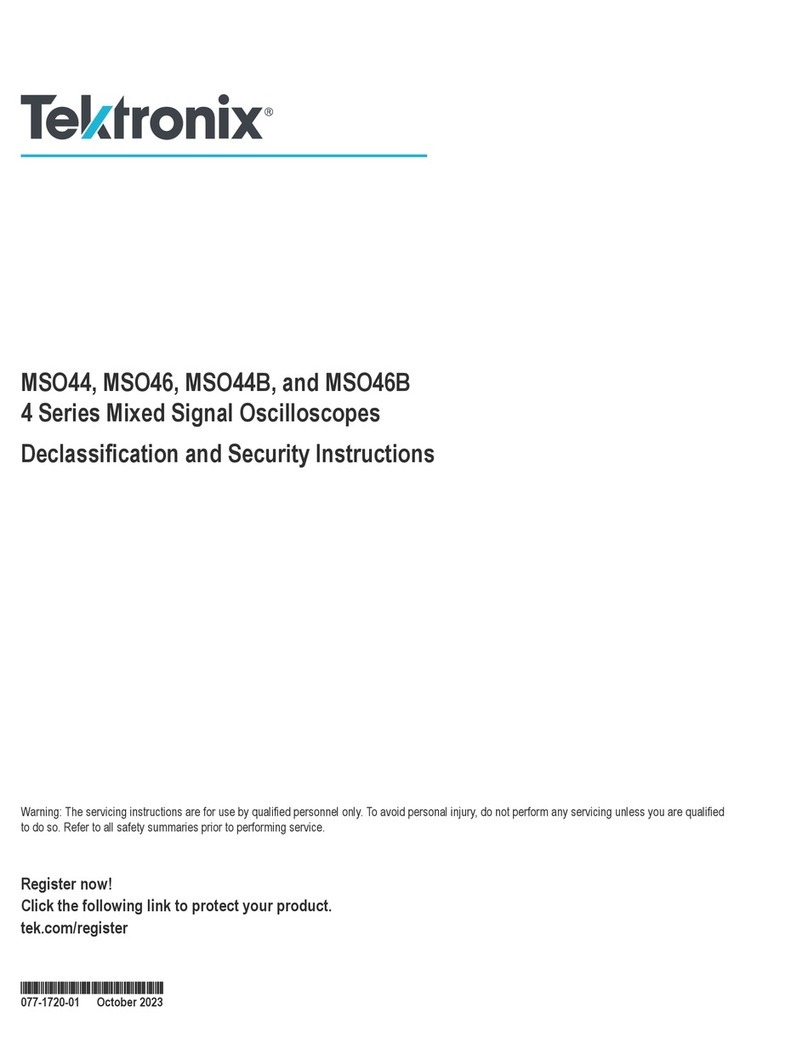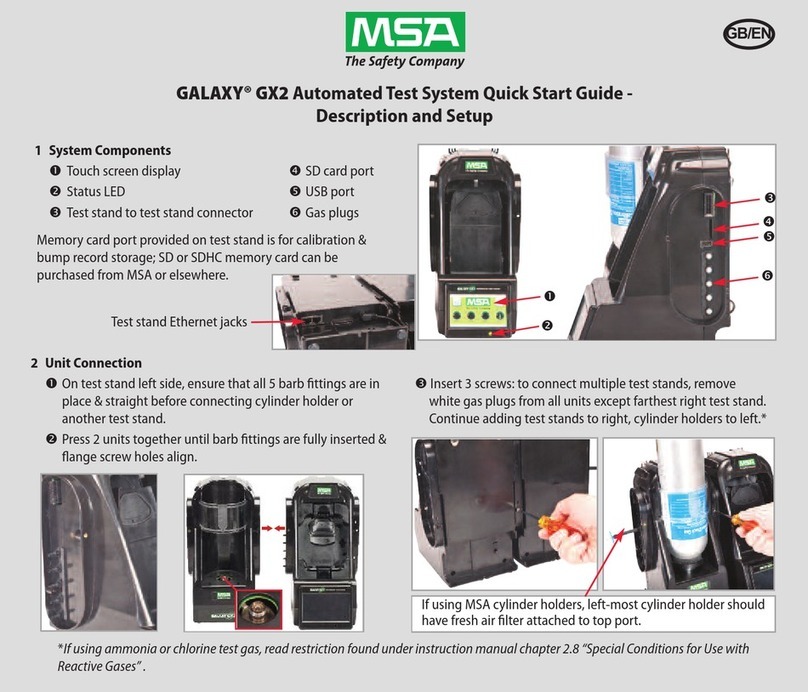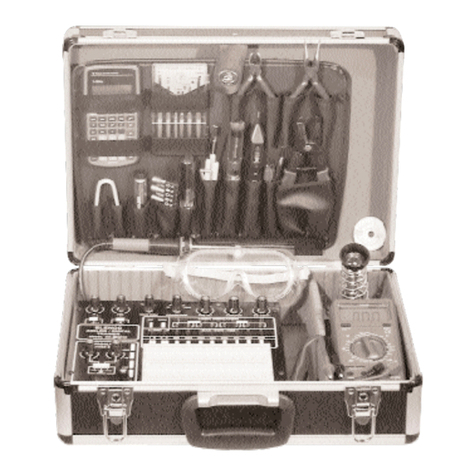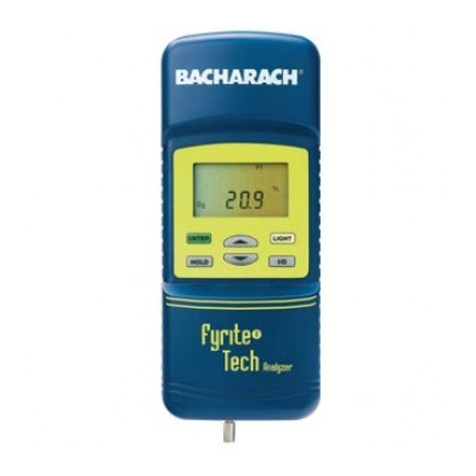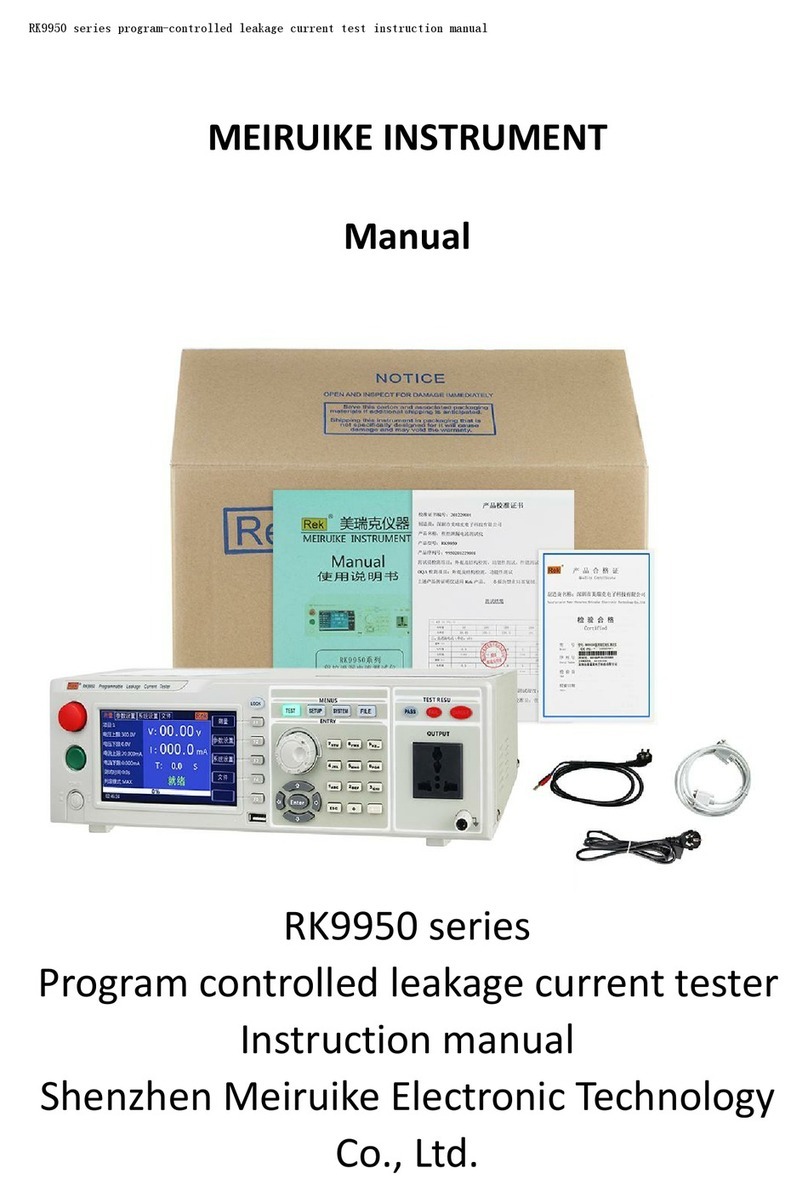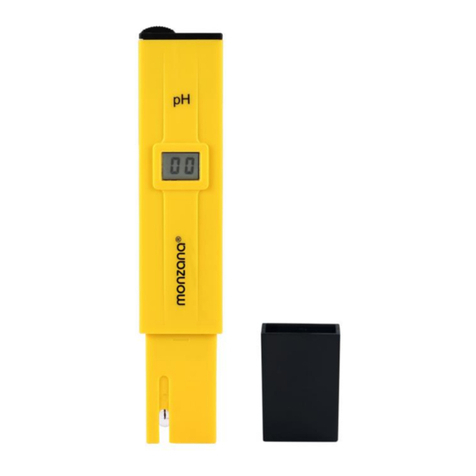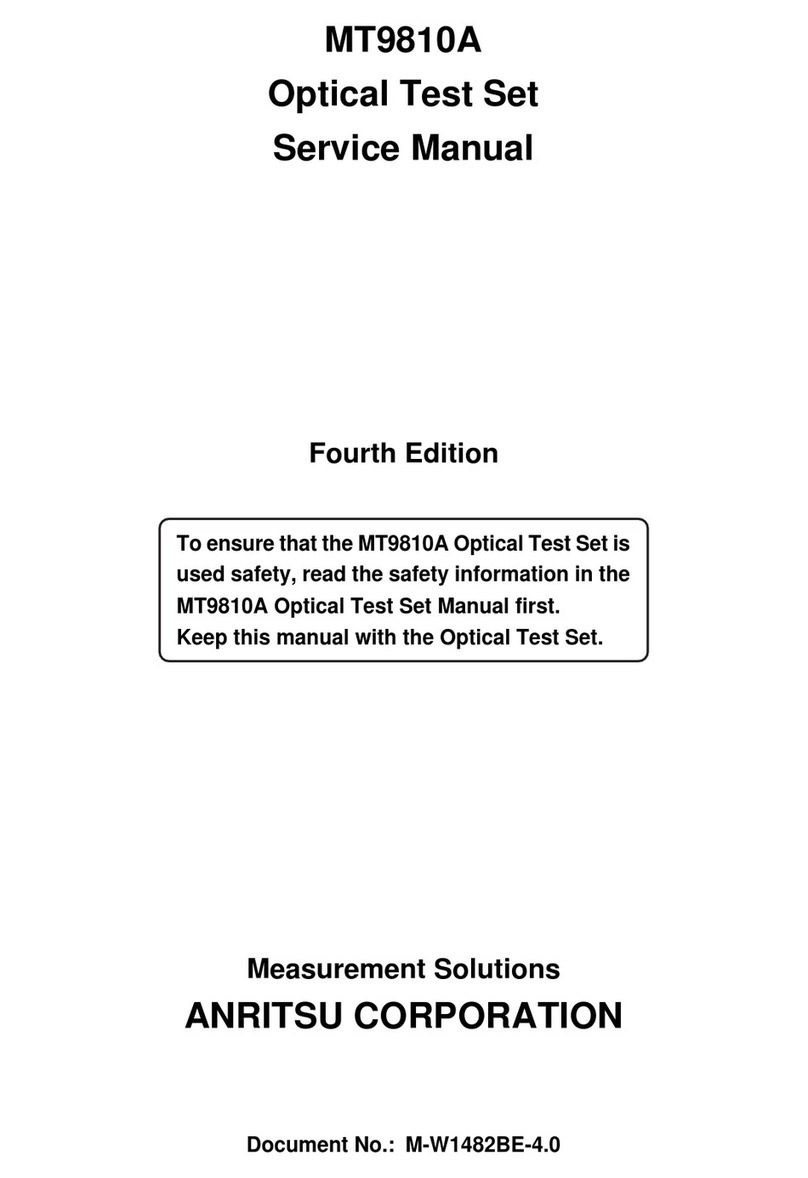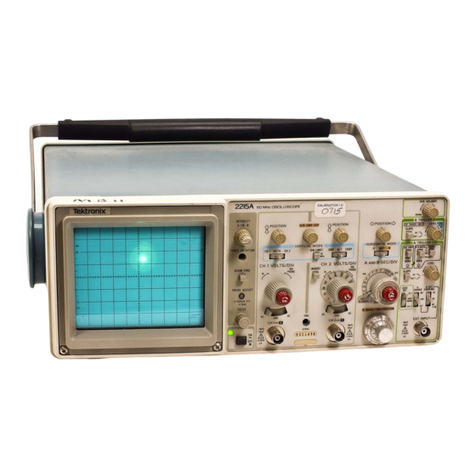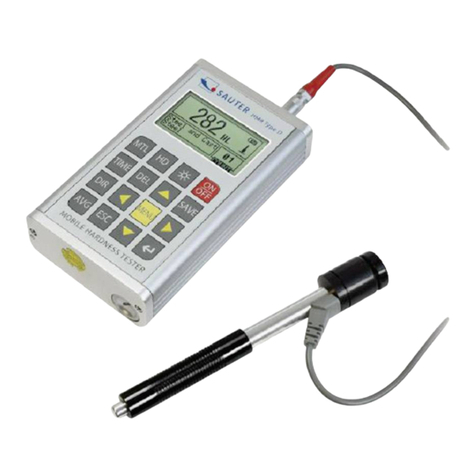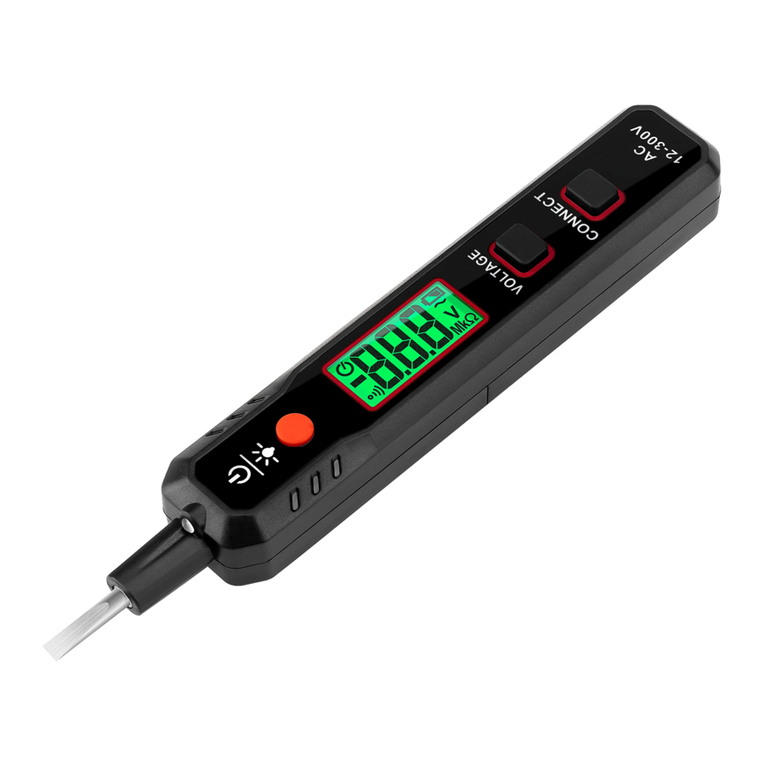
()
()
()
()
()
()
5 Before preset all functions, reset instrument
6 Don't connect test port and test wire when doing test
7 Don't connect HV output port with shield box or GND wire to avoid
instrument damage.
8 Turn off power when accident take place
9 Examine and repair when Indicator or annunciator is out of function
0 Operate carefully to avoid hazard when take the remote test.1
IV Explain (as the front panel)、IV Explain (as the front panel)、
() :
()"":,
()"" :
() :
()"" :
() : (
)
() :
()"":
""
()"":
:
()"":
()"":,
()"" :
()"" :"/"
()"":
()"”:
1 Power switch to control all power supply
2 START switch when press down the button instrument will renew to
waiting-test status with the light working.
3 RESET SWITCH press down the button means no HV output
4 Manual port remote control test port
5 V-ADJ rotary switch adjust test voltage
6 HVOUT port test voltage output 1 port for AC test instrument and 2ports
for AC/DC test instrument
7 GND connect with one port of the tested
8 OVER LEAK. indicator “OVER LEAK.” Indication light and annunciate
work when test current leakage exceed pre-set value, voltage output will be
cut off, then press down the REST button and Anti-clockwisely circumvolve
“V-ADJ” rotary switch to the maximum to be ready for next test operation.
9 VOLTAGE meter Three bits digital voltage meter, indicate output voltage
value
10 CURRENT meter 3 1/2 digital current meter, indicate leakage current
value
11 TIMER meter 2 bits digital displayer show timing value
12 TIMER rotary switch to adjust to set timing range
13 OVER LEAK. pre-set adjustor Press down PRE-SET TEST switch to
pre-set leakage current value and display current test result
14 PRESET / TEST button Press down to preset and or else to test
15 CURRENTLEAK. range Testrangeare0~2mA&2~20mA.
2

















